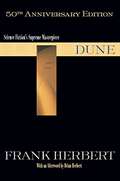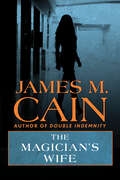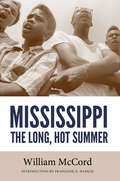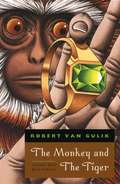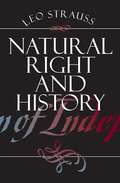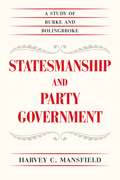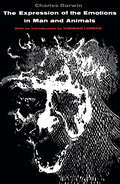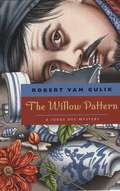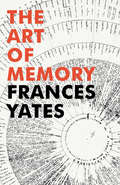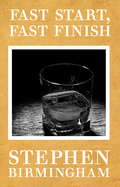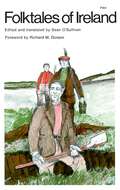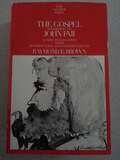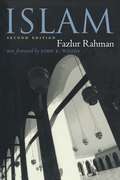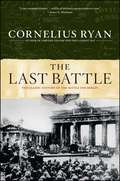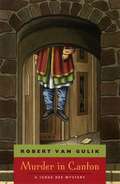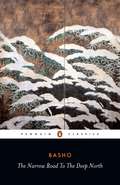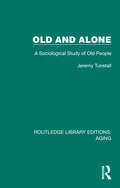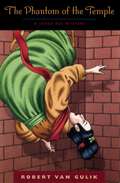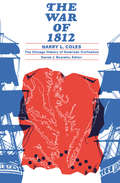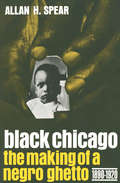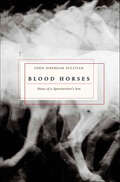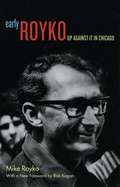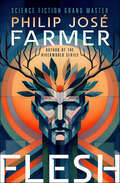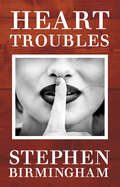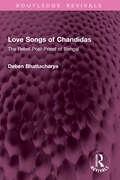- Table View
- List View
Dune: Deluxe Edition (Dune #1)
by Frank Herbert• DUNE: PART TWO • THE MAJOR MOTION PICTUREDirected by Denis Villeneuve, screenplay by Denis Villeneuve and Jon Spaihts, based on the novel Dune by Frank Herbert • Starring Timothée Chalamet, Zendaya, Rebecca Ferguson, Josh Brolin, Austin Butler, Florence Pugh, Dave Bautista, Christopher Walken, Stephen McKinley Henderson, Léa Seydoux, with Stellan Skarsgård, with Charlotte Rampling, and Javier BardemFrank Herbert&’s classic masterpiece—a triumph of the imagination and one of the bestselling science fiction novels of all time.Set on the desert planet Arrakis, Dune is the story of Paul Atreides—who would become known as Muad'Dib—and of a great family's ambition to bring to fruition mankind's most ancient and unattainable dream.A stunning blend of adventure and mysticism, environmentalism and politics, Dune won the first Nebula Award, shared the Hugo Award, and formed the basis of what is undoubtedly the grandest epic in science fiction.
The Magician's Wife
by James M. CainFor the love of a beautiful waitress, a meat salesman will turn butcher in this crime thriller by “one of the greats of American noir” (The Guardian).Clay Lockwood. is a top distributing executive with Grant’s Meats, and the contract with the Portico restaurant chain is only the latest in a long line of boardroom coups. He arrives at the Portico for lunch, and eats his fill of his company’s beef, but leaves with an entirely different hunger gnawing at his gut—a volcanic passion that will tear him apart. Lockwood is mesmerized by hostess Sally Alexis, a magician’s wife. She rebuffs his first pass, but calls him up later…. Although Sally’s marriage is miserable, she won’t leave her husband in order to secure an inheritance for her little boy. And as the lovers get closer, Lockwood becomes an amateur illusionist himself, focusing on one very particular deadly trick—how to make a magician disappear.“James M. Cain is one novelist who has something to teach just about any writer, and delight just about any reader.” —Anne Rice, #1 New York Times–bestselling author of Interview with a Vampire
Mississippi: The Long, Hot Summer (Civil Rights in Mississippi Series)
by William McCordIn 1964, sociologist William McCord, long interested in movements for social change in the United States, began a study of Mississippi's Freedom Summer. Stanford University, where McCord taught, had been the site of recruiting efforts for student volunteers for the Freedom Summer project by such activists as Robert Moses and Allard Lowenstein. Described by his wife as “an old-fashioned liberal,” McCord believed that he should both examine and participate in events in Mississippi. He accompanied student workers and black Mississippians to courthouses and Freedom Houses, and he attracted police attention as he studied the mechanisms of white supremacy and the black nonviolent campaign against racial segregation. Published in 1965 by W. W. Norton, his book, Mississippi: The Long, Hot Summer, is one of the first examinations of the events of 1964 by a scholar. It provides a compelling, detailed account of Mississippi people and places, including the thousands of student workers who found in the state both opportunities and severe challenges. McCord's work sought to communicate to a broad audience the depth of repression in Mississippi. Here was evidence of the need for federal action to address what he recognized as both national and southern failures to secure civil rights for black Americans. His field work and activism in Mississippi offered a perspective that few other academics or other white Americans had shared. Historian Françoise N. Hamlin provides a substantial introduction that sets McCord's work within the context of other narratives of Freedom Summer and explores McCord's broader career that combined distinguished scholarship with social activism.
The Monkey and The Tiger: Judge Dee Mysteries (The Judge Dee Mysteries)
by Robert van GulikThe Monkey and The Tiger includes two detective stories, "The Morning of the Monkey" and "The Night of the Tiger." In the first, a gibbon drops an emerald in the open gallery of Dee's official residence, leading the judge to discover a strangely mutilated body in the woods—and how it got there. In the second, Dee is traveling to the imperial capital to assume a new position when he is separated from his escort by a flood. Marooned in a large country house surrounded by fierce bandits, Dee confronts an apparition that helps him solve a mystery.
Natural Right and History: Lectures And Essays By Leo Strauss, 1937-1946 (Walgreen Foundation Lectures)
by Leo StraussIn this classic work, Leo Strauss examines the problem of natural right and argues that there is a firm foundation in reality for the distinction between right and wrong in ethics and politics. On the centenary of Strauss's birth, and the fiftieth anniversary of the Walgreen Lectures which spawned the work, Natural Right and History remains as controversial and essential as ever. "Strauss . . . makes a significant contribution towards an understanding of the intellectual crisis in which we find ourselves . . . [and] brings to his task an admirable scholarship and a brilliant, incisive mind."—John H. Hallowell, American Political Science Review Leo Strauss (1899-1973) was the Robert Maynard Hutchins Distinguished Service Professor Emeritus in Political Science at the University of Chicago.
Statesmanship and Party Government: A Study of Burke and Bolingbroke
by Harvey C. MansfieldIn this incisive look at early modern views of party politics, Harvey C. Mansfield examines the pamphlet war between Edmund Burke and the followers of Henry St. John, First Viscount Bolingbroke during the mid-eighteenth century. In response to works by Bolingbroke published posthumously, Burke created his most eloquent advocacy of the party system. Taking an interdisciplinary approach to the material, Mansfield shows that present-day parties must be understood in the light of the history of party government. The complicated organization and the public actions of modern parties are the result, he contends, and not the cause of a great change in opinion about parties. Mansfield points out that while parties have always existed, the party government that we know today is possible only because parties are now considered respectable. In Burke’s day, however, they were thought by detractors to be a cancer in a free polity. Even many supporters of the parties viewed them as a dangerous instrument, only to be used cautiously by statesmen in dire times. Burke, however, was an early champion of the party system in Britain and made his arguments with a clear-eyed realism. In Statesmanship and Party Government, Mansfield provides a skillful evaluation of Burke’s writings and sheds light present-day party politics through a profound understanding of the historical background of the their inception.
the Expression of the Emotions in Man and Animals (Cambridge Library Collection - Darwin, Evolution And Genetics Ser.)
by Charles DarwinDarwin's work of 1872 still provides the point of departure for research in the theory of emotion and expression. Although he lacked the modern research tool of cybernetics, his basic methods have not been improved upon: the study of infants, of the insane, of paintings and sculpture, of some of the commoner animals; the use of photographs of expression submitted to different judges; and the comparative study of expression among different peoples. This new edition will be warmly welcomed by those behavioral scientists who have recently shown an intense interest in the scientific study of expression. Lay readers, too, will be struck by the freshness and directness of this book, which includes, among other data, Darwin's delightfully objective analysis of his own baby's smiles and pouts.
The Willow Pattern: A Judge Dee Mystery (The Judge Dee Mysteries)
by Robert van GulikJudge Dee has been appointed emergency governor of the plague- and drought-ridden Imperial City. As his guards help the city fend off a popular uprising, an aristocrat from one of the oldest families in China suffers an "accident" in a deserted mansion.In The Willow Pattern, the illustrious judge uses his trademark expertise to unravel the mysteries of the nobleman, a shattered vase, and a dead bondmaid. Along the way he encounters a woman who fights with loaded sleeves, a nearly drowned courtesan, and an elaborate trap set for a murderer. Packed with suspense, violence, and romance, The Willow Pattern won’t disappoint Judge Dee’s legions of loyal fans."The China of old, in Mr. van Gulik’s skilled hands, comes vividly alive again."—Allen J. Hubin, New York Times Book Review
The Art of Memory
by Frances A YatesThis unique and brilliant book is a history of human knowledge. Before the invention of printing, a trained memory was of vital importance. Based on a technique of impressing 'places' and 'images' on the mind, the ancient Greeks created an elaborate memory system which in turn was inherited by the Romans and passed into the European tradition, to be revived, in occult form, during the Renaissance. Frances Yates sheds light on Dante’s Divine Comedy, the form of the Shakespearian theatre and the history of ancient architecture; The Art of Memory is an invaluable contribution to aesthetics and psychology, and to the history of philosophy, of science and of literature.
Fast Start, Fast Finish
by Stephen BirminghamA family man risks everything to pursue his artistic dreams, in this novel of marriage, betrayal, and suburban malaise by the author of The Auerbach Will. California art director Charlie Lord has all the makings of a surefire winner. But despite his good looks, wit, and sophistication, his track record shows a series of blazing starts followed by fast, ego-crushing finishes. His marriage to Nancy, complete with three almost grown-up children and an elegant house in an exclusive suburb, gave him all the trappings of happiness. Still, none of these things can satisfy Charlie&’s dreams of success on a grand scale. Now he&’s off and running once again—taking his family across the country to New York, where he hopes to further his career as an artist. But Charlie soon finds himself submerged in a sea of troubles . . . and a fevered love affair that threatens to destroy his life.
Folktales of Ireland
by Sean O’SullivanFew countries can boast such a plentitude of traditional folktales as Ireland. In 1935, the creation of The Irish Folklore Commission set in motion the first organized efforts of collecting and studying a multitude of folktales, both written as well as those of the Irish oral tradition. The Commission has collected well over a million pages of manuscripts. Folktales of Ireland offers chief archivist Sean O'Sullivan's representation of this awe-inspiring collection. These tales represent the first English language collection of Gaelic folktales. "Without doubt the finest group of Irish tales that has yet been published in English."—The Guardian "O'Sullivan writes out of an intimacy with his subject and an instinctive grasp of the language of the originals. He tells us that his archives contain more than a million and a half pages of manuscript. If Mr. O'Sullivan translates them, I'll read them."—Seamus Heaney, New Statesman "The stories have an authentic folktale flavor and will satisfy both the student of folklore and the general reader."—Booklist
The Gospel According To John: Chapters I-xii (Anchor Bible Commentaries Ser.)
by Raymond E. BrownIn the first volume of Raymond E. Brown’s magisterial three-volume commentary on the Gospel According to John, all of the major Johannine questions—of authorship, composition, dating, the relationship of John to the Synoptics (Mark, Matthew, and Luke)—are discussed. The important theories of modern biblical scholarship concerning John are weighed against the evidence given in the text and against prevailing biblical research. In sum, what is attempted is a synthesis of the major scholarly insights that bear on the Fourth Gospel. The translation—as Father Brown states at the outset—strives not for any formal beauty but rather for an accurate and contemporary version: “the simple, everyday Greek of the Gospel has been rendered into the ordinary American English of today.” The result is a translation that will strike the reader with uncommon immediacy. Father Brown also analyzes, in the appendixes, the meaning, use, and frequency of certain key words and phrases that occur in John, and examines the differences between the Johannine and Synoptic treatments of the miracle stories. The chapters of the Gospel translated here in Volume 29 (1–12) comprise the Prologue, which opens with the famous “In the beginning was the Word,” and the Book of Signs, an account of the miracles of Jesus and of his ministry.
Islam
by Fazlur RahmanFazlur Rahman's Islam is aptly titled, in that this slim volume constitutes an incisive and surprisingly comprehensive history and analysis of Islam—its history, its conflicts, its legacy—and its prospects. From Mohammed to the late twentieth century, Rahman traces the development of Islam as a religion and, more importantly, as an intellectual tradition, offering both an easily understood introduction to the faith and an impassioned argument for its future direction.
The Last Battle: The Classic History of the Battle for Berlin (A History Bestseller)
by Cornelius RyanThe classic account of the final offensive against Hitler&’s Third Reich.The Battle for Berlin was the culminating struggle of World War II in the European theater, the last offensive against Hitler&’s Third Reich, which devastated one of Europe&’s historic capitals and marked the final defeat of Nazi Germany. It was also one of the war&’s bloodiest and most pivotal battles, whose outcome would shape international politics for decades to come. The Last Battle is Cornelius Ryan&’s compelling account of this final battle, a story of brutal extremes, of stunning military triumph alongside the stark conditions that the civilians of Berlin experienced in the face of the Allied assault. As always, Ryan delves beneath the military and political forces that were dictating events to explore the more immediate imperatives of survival, where, as the author describes it, &“to eat had become more important than to love, to burrow more dignified than to fight, to exist more militarily correct than to win.&” The Last Battle is the story of ordinary people, both soldiers and civilians, caught up in the despair, frustration, and terror of defeat. It is history at its best, a masterful illumination of the effects of war on the lives of individuals, and one of the enduring works on World War II.
Murder in Canton: A Judge Dee Mystery (The Judge Dee Mysteries)
by Robert van GulikBrought back into print in the 1990s to wide acclaim, re-designed new editions of Robert van Gulik's Judge Dee Mysteries are now available. Written by a Dutch diplomat and scholar during the 1950s and 1960s, these lively and historically accurate mysteries have entertained a devoted following for decades. Set during the T'ang dynasty, they feature Judge Dee, a brilliant and cultured Confucian magistrate disdainful of personal luxury and corruption, who cleverly selects allies to help him navigate the royal courts, politics, and ethnic tensions in imperial China. Robert van Gulik modeled Judge Dee on a magistrate of that name who lived in the seventh century, and he drew on stories and literary conventions of Chinese mystery writing dating back to the Sung dynasty to construct his ingenious plots.Murder in Canton takes place in the year 680, as Judge Dee, recently promoted to lord chief justice, is sent incognito to Canton to investigate the disappearance of a court censor. With the help of his trusted lieutenants Chiao Tai and Tao Gan, and that of a clever blind girl who collects crickets, Dee solves a complex puzzle of political intrigue and murder through the three separate subplots "the vanished censor," "the Smaragdine dancer," and "the Golden Bell." An expert on the art and erotica as well as the literature, religion, and politics of China, van Gulik also provides charming illustrations to accompany his engaging and entertaining mysteries.
The Narrow Road to the Deep North and Other Travel Sketches
by Matsuo Basho'It was with aweThat I beheldFresh leaves, green leaves,Bright in the sun'When the Japanese haiku master Basho composed The Narrow Road to the Deep North, he was an ardent student of Zen Buddhism, setting off on a series of travels designed to strip away the trappings of the material world and bring spiritual enlightenment. He writes of the seasons changing, the smell of the rain, the brightness of the moon and the beauty of the waterfall, through which he sensed the mysteries of the universe. These writings not only chronicle Basho's travels, but they also capture his vision of eternity in the transient world around him.Translated with an Introduction by Nobuyuki Yuasa
Old and Alone: A Sociological Study of Old People (Routledge Library Editions: Aging)
by Jeremy TunstallWhat is it like to be an isolated old widow, living alone on the bare old-age pension? In the 1960s, the question had become a standard refrain. Originally published in 1966, this was the first full-length study by a sociologist of isolation in old age.Although the majority of old people were in no sense a problem group at the time, a substantial minority of the elderly were ‘alone’ in one or more ways. About 1.3 million people aged sixty-five and over in Britain lived alone; a large number admitted to feeling lonely, at least sometime. About a million were actually socially isolated in terms of low level and frequency of social contact. Mr Tunstall also uses a fourth category of aloneness – namely anomie (as developed by Durkheim, Merton, and Srole).This report uses careful and statistical analysis of the four types of aloneness and of specially affected groups such as the single, the recently widowed, and the housebound. But it also includes details of interviews with ten highly individual old people from suburban Harrow, booming Northampton, industrial revolution Oldham, and rural South Norfolk.The book contains a discussion of the problem of personality in isolation, and a commentary on the inadequacies of social theory about old age. Finally, the concluding chapter suggests a wide variety of policy measures which might help to alleviate social isolation in old age.
The Phantom of the Temple: A Judge Dee Mystery (The Judge Dee Mysteries)
by Robert van GulikJudge Dee presided over his imperial Chinese court with a unique brand of Confucian justice. A near mythic figure in China, he distinguished himself as a tribunal magistrate, inquisitor, and public avenger. Long after his death, accounts of his exploits were celebrated in Chinese folklore, and later immortalized by Robert van Gulik in his electrifying mysteries. In The Phantom of the Temple, three separate puzzles—the disappearance of a wealthy merchant's daughter, twenty missing bars of gold, and a decapitated corpse—are pieced together by the clever judge to solve three murders and one complex, gruesome plot. “Judge Dee belongs in that select group of fictional detectives headed by the renowned Sherlock Holmes. I assure you it is a compliment not given frivolously.”—Robert Kirsch, Los AngelesTimes Robert Van Gulik (1910-67) was a Dutch diplomat and an authority on Chinese history and culture. He drew his plots from the whole body of Chinese literature, especially from the popular detective novels that first appeared in the seventeenth century.
The War of 1812 (The\chicago History Of American Civilization Ser. #Vol. 22)
by Harry L. Coles The Chicago History of American CivilizationThis compact history of the war attempts to separate myth from reality. Professor Coles narrates the main operations on both land and sea of the three-year struggle. He examines the conflict from the British (and Canadian) as well as the American point of view, relating events in America to the larger war going on in Europe. "A balanced analysis of tactics and strategy, this book also summarizes succinctly and clearly recent scholarship on causes and describes briefly the war's military, economic, and political consequences. Coles has surveyed thoroughly the existing literature but arrives at a number of independent judgments. It is the best single-volume account of the war in all its aspects. In recounting sea battles, Coles puts aside the patriotic blinders that have for so long prevented a sensible understanding of American capabilities and strategic necessities; thus American naval victories are put in a proper perspective. And in dealing with land engagements, he has shunned the mocking and amused attitude which has so often passed for historical judgment. Undergraduates will be stimulated by the hints of modern parallels and will find useful the excellent annotated bibliography and simple maps."—Choice
Black Chicago: The Making of a Negro Ghetto, 1890–1920
by Allan H. SpearAllan Spear explores here the history of a major Negro community during a crucial thirty-year period when a relatively fluid patter of race relations gave way to a rigid system of segregation and discrimination. This is the first historical study of the ghetto made famous by the sociological classics of St. Clair Drake, E. Franklin Frazier, and others—by the novels of Richard Wright, and by countless blues songs. It was this ghetto that Martin Luther King, Jr., chose to focus on when he turned attention to the racial injustices of the North. Spear, by his objective treatment of the results of white racism, gives an effective, timely reminder of the serious urban problems that are the legacy of prejudice.
Blood Horses: Notes of a Sportswriter's Son
by John Jeremiah SullivanFrom the award-wining author of Pulphead, John Jeremiah Sullivan's first book, Blood Horses, combines personal reflections about his father and an in-depth look at the history and culture of Thoroughbred racehorses.Winner of a 2004 Whiting Writers' Award"Sullivan has found the transcendent in the horse."--Sports IllustratedOne evening late in his life, veteran sportswriter Mike Sullivan was asked by his son what he remembered best from his three decades in the press box. The answer came as a surprise. "I was at Secretariat's Derby, in '73. That was ... just beauty, you know?"John Jeremiah Sullivan didn't know, not really--but he spent two years finding out, journeying from prehistoric caves to the Kentucky Derby in pursuit of what Edwin Muir called "our long-lost archaic companionship" with the horse. The result--winner of a National Magazine Award and named a Book of the Year by The Economist magazine--is an unprecedented look at Equus caballus, incorporating elements of memoir, reportage, and the picture gallery.In the words of the New York Review of Books, Blood Horses "reads like Moby-Dick as edited by F. Scott Fitzgerald . . . Sullivan is an original and greatly gifted writer."
Early Royko: Up Against It in Chicago
by Mike RoykoCombining the incisive pen of a newspaperman and the compassionate soul of a poet, Mike Royko became a Chicago institution—in Jimmy Breslin’s words, "the best journalist of his time." Early Royko: Up Against It in Chicago will restore to print the legendary columnist’s earliest writings, which chronicle 1960s Chicago with the moral vision, ironic sense, and razor-sharp voice that would remain Royko’s trademark. This collection of early columns from the Chicago Daily News ranges from witty social commentary to politically astute satire. Some of the pieces are falling-down funny and others are tenderly nostalgic, but all display Royko’s unrivaled skill at using humor to tell truth to power. From machine politicians and gangsters to professional athletes, from well-heeled Chicagoans to down-and-out hoodlums, no one escapes Royko’s penetrating gaze—and resounding judgment. Early Royko features a memorable collection of characters, including such well-known figures as Hugh Hefner, Mayor Richard J. Daley, and Dr. Martin Luther King. But these boldfaced names are juxtaposed with Royko’s beloved lesser knowns from the streets of Chicago: Mrs. Peak, Sylvester "Two-Gun Pete" Washington, and Fats Boylermaker, who gained fame for leaning against a corner light pole from 2 a.m. Saturday until noon Sunday, when his neighborhood tavern reopened for business. Accompanied by a foreword from Rick Kogan, this new edition will delight Royko’s most ardent fans and capture the hearts of a new generation of readers. As Kogan writes, Early Royko "will remind us how a remarkable relationship began—Chicago and Royko, Royko and Chicago—and how it endures."
Flesh
by Philip José FarmerA starship crew returns to a primitive, post-apocalyptic—and deadly—Earth in this classic adventure by a Science Fiction Grand Master. After eight centuries of exploring the stars, Space Capt. Peter Stagg and his starship crew return to Earth to find a scorched planet with little plant life remaining. Civilization has changed drastically with technology reverted to the Stone Age and culture centered on a pagan fertility cult. Stagg soon finds himself initiated into the Elk fraternity. They graft antlers to his head, crowning him the new &“Sunhero.&” He is then sent on a six-month tour to repopulate the world with the help of every willing virgin. Now the crew must find a way to escape, because while the captain&’s journey might sound pleasurable, it will only end in pain . . . &“A bawdy but good yarn.&” —Analog Science Fiction and Fact&“Farmer must have had lots of fun writing this because I had quite a bit reading it.&” —Locu
Heart Troubles
by Stephen BirminghamIn this short story collection, the acclaimed author of Our Crowd offers fourteen darkly funny and poignant tales of the human heart. Stephen Birmingham is renowned for his penetrating examinations of America&’s upper classes. Here, he proves himself an equally deft hand at fiction, bringing the same knowing wit and piercing insight to the short stories in this collection. In &“She Ate Grass?,&” a boy navigates coming of age while buying whiskey for his mother&’s cocktail party. In &“Race Day,&” a shy woman endures her husband&’s ambition to join the board of an exclusive yacht club. In these and other stories, Birmingham peels back the layers of middle-class life in the late twentieth century.
Love Songs of Chandidas: The Rebel Poet-Priest of Bengal (Routledge Revivals)
by Deben BhattacharyaFirst published in 1967, Love Songs of Chandidās provides an informative introduction which makes vividly clear the importance of Chandidās to the Indian peasant masses. As the author tells us, the traveller through the Birbhum area of Bengal hears Chandidās everywhere, in the villages, in the fields, on the roads. Night after night, the people gather in the temple courtyards or on the village greens to listen to professional ‘Kirtan’ singers sing his songs of the divine love of Radha and Krishna. The influence of Chandidās on contemporary Bengali literature is equally important, his songs having enriched the work of great poets such as Rabindranath Tagore, Govindadas, and many others. The author also discusses the interesting topic of the Sahaja (‘spontaneity’) movement in Indian faith and literature, as manifested in the songs of Chandidās, and the worship of love-making, divine and human, as an important aspect of this faith. This book will be of interest to students of literature, music, history, cultural studies and South Asian studies.
